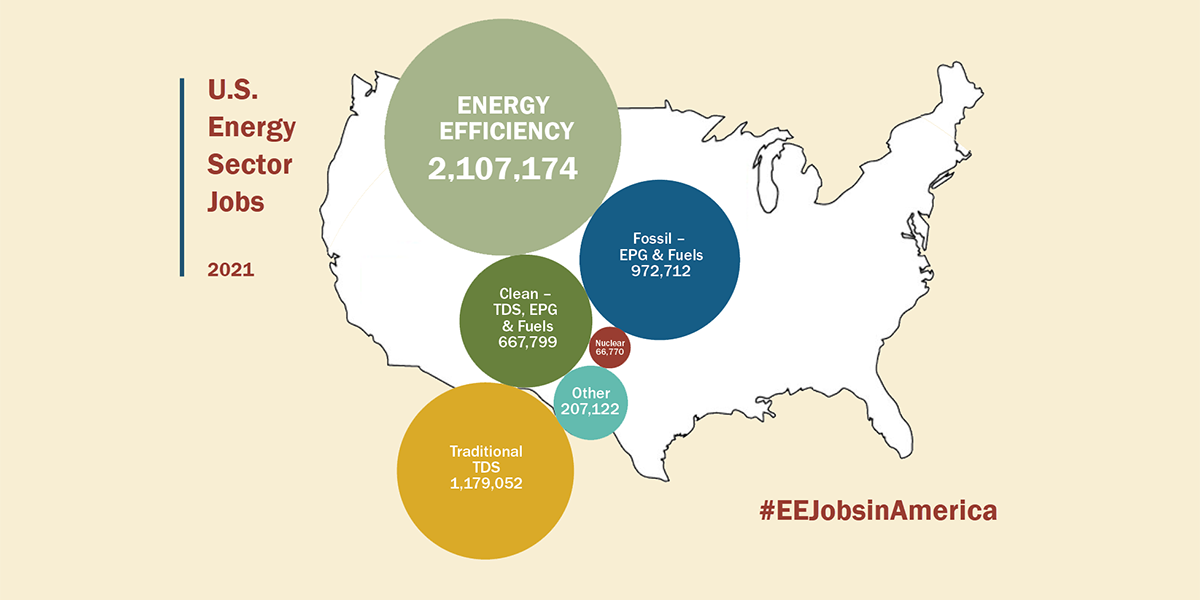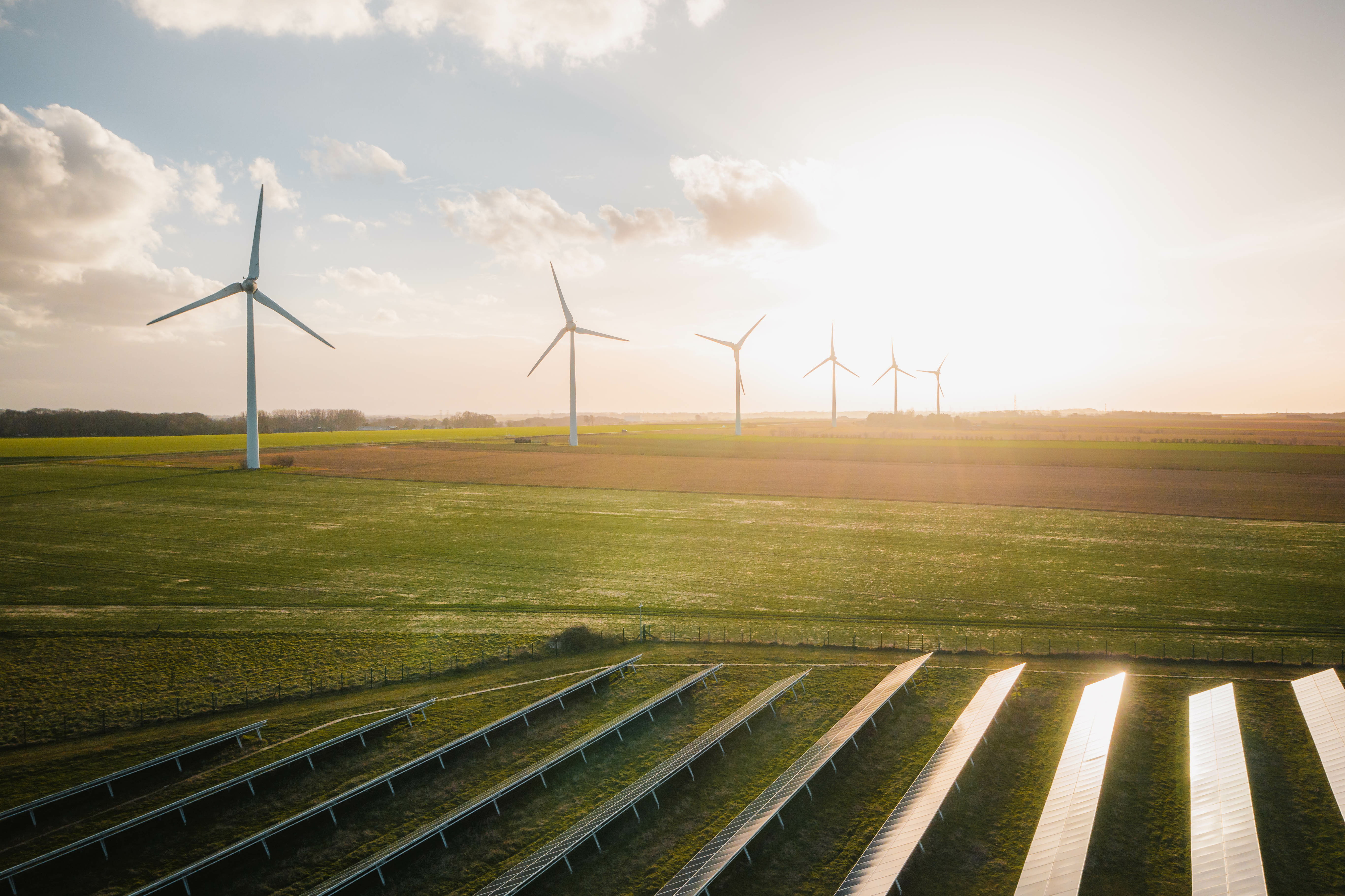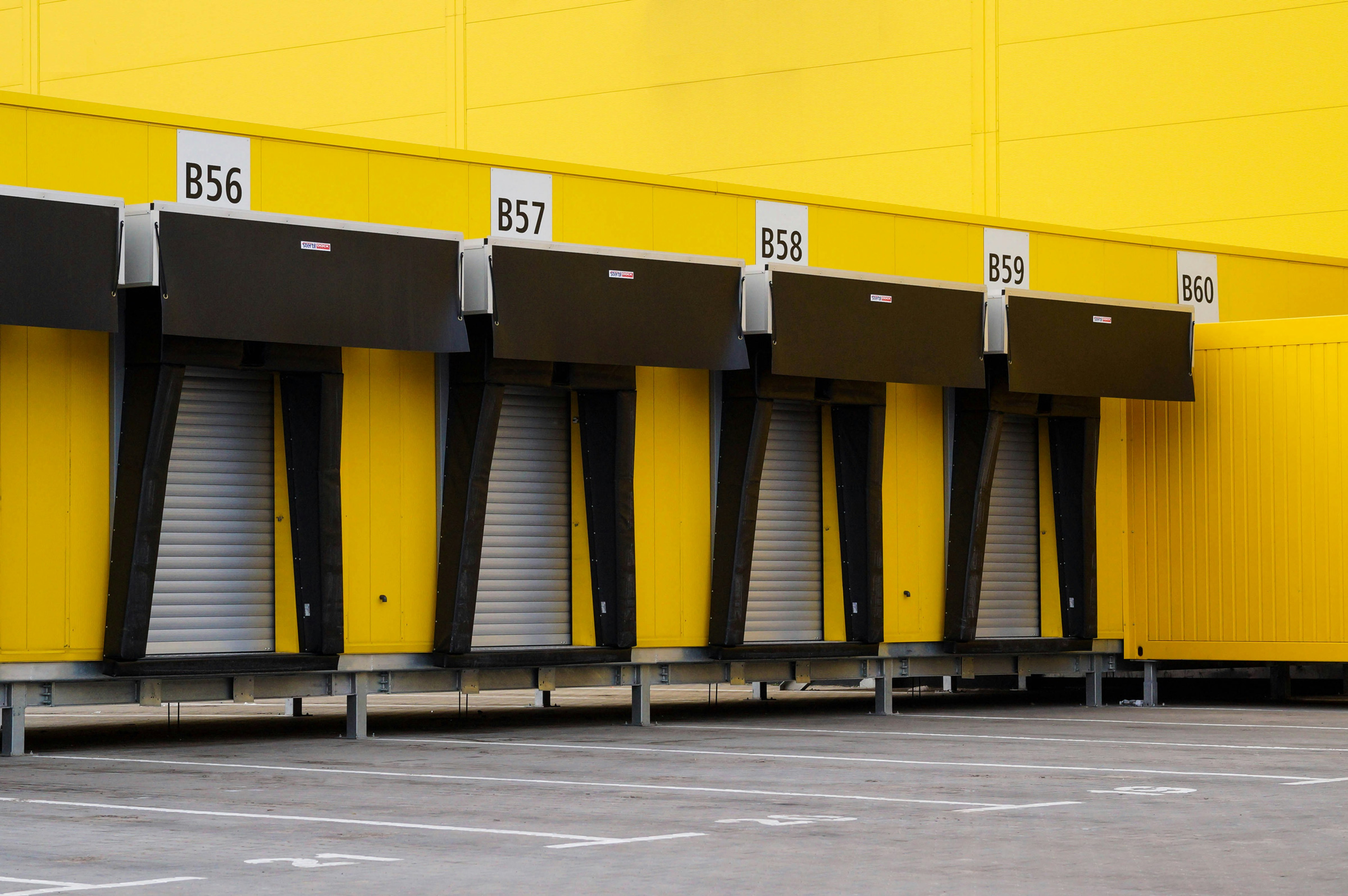Report: A Stalled Recovery Hinders America’s Largest Clean Energy Sector
Let's Save Energy
Alliance to Save Energy's Blog

Graphic credit: E4TheFuture
Back before the start of the COVID-19 pandemic, the outlook for the energy efficiency sector was encouraging: this sector – which includes construction workers retrofitting buildings, manufacturers of ENERGY STAR appliances, home energy auditors, and more – was by far the largest employer in clean energy, accounting for 70% of all clean energy jobs, and it was adding more new jobs than any other energy sector. At the time, the one sign of needed improvement was a shortage of trained workers – a possible impediment to speedy deployment of energy efficiency technologies in order to meet our climate goals on time.
That’s why what happened next was the exact last thing that the clean energy economy needed: When COVID-19 hit in spring 2020, nearly 20% of energy efficiency workers lost their jobs in March and April alone. Now, a report released today by E4TheFuture and E2 shows that more than a year and half into the pandemic, recovery is still far from complete, with an 11% drop in employment from December 2019 to June 2021. The recovery has been more or less stalled over the past year, with job growth of less than 1% between December 2020 and June 2021 for a total of 2,115,533 energy efficiency workers.
Why it matters
The effects of the stalled recovery do not just impact the hundreds of thousands of energy efficiency workers who lost their jobs during the pandemic as in-person work shut down and households and businesses held off on capital improvements. This impacts the clean energy transition as a whole: President Joe Biden has set a goal for the United States to reach net-zero emissions by 2050, and enhanced energy efficiency is foundational to reaching that goal. In fact, the American Council for an Energy Efficient Economy has found that improving the efficiency of our vehicles, industry, and buildings can cut U.S. emissions 50% by 2050 – halfway to Biden’s goal. Additionally, as more renewables come onto the grid, efficiency will be critical to maintaining reliability and reducing costs – E4TheFuture finds that in an optimal clean energy portfolio, efficiency can contribute 23% to grid reliability and 39% to electricity supply. And the economic benefits are just as important as the environmental: efficiency helps to eliminate energy insecurity – faced by one in three families in America – by reducing high energy burdens that disproportionately impact low-income and minority communities.
A robust, well-trained workforce is needed to achieve these benefits. Efficiency workers are everywhere – today’s report finds that energy efficiency jobs are available in 99.8% of U.S. counties – but so have been the job losses of the past year, with losses in every state between December 2019 and June 2020 and some states losing more than 30% of their workforce. Getting the rate of growth back to where it was before the pandemic is about economic opportunity, reducing inequitable energy burdens, and achieving the clean energy transition at the speed necessary to avoid the worst of climate change.
What can be done?
Congress today is working on two legislative packages that would be transformative for the energy industry. Measures to stimulate energy efficiency job growth and increase training opportunities must be included to get recovery out of its rut. In the early days of COVID-19, the Alliance designed a suite of policy priorities as the pandemic’s impact on the efficiency workforce became clear, many of which are now under consideration in the halls of Capitol Hill. These include the Main Street Efficiency Act, the Open Back Better Act, reforming energy efficiency tax incentives, and investing in transportation efficiency. As Congress continues negotiating on its two bills, lawmakers would be wise to remember the import of these policies for creating jobs in their constituencies, keeping energy costs down, and cutting climate-warming emissions. We couldn’t afford a slowdown in the efficiency sector’s growth prior to the pandemic, and now we’ve got our work cut out for us to catch up.
STAY EMPOWERED
Help the Alliance advocate for policies to use energy more efficiently – supporting job creation, reduced emissions, and lower costs. Contact your member of Congress.
Energy efficiency is smart, nonpartisan, and practical. So are we. Our strength comes from an unparalleled group of Alliance Associates working collaboratively under the Alliance umbrella to pave the way for energy efficiency gains.
The power of efficiency is in your hands. Supporting the Alliance means supporting a vision for using energy more productively to achieve economic growth, a cleaner environment, and greater energy security, affordability, and reliability.



